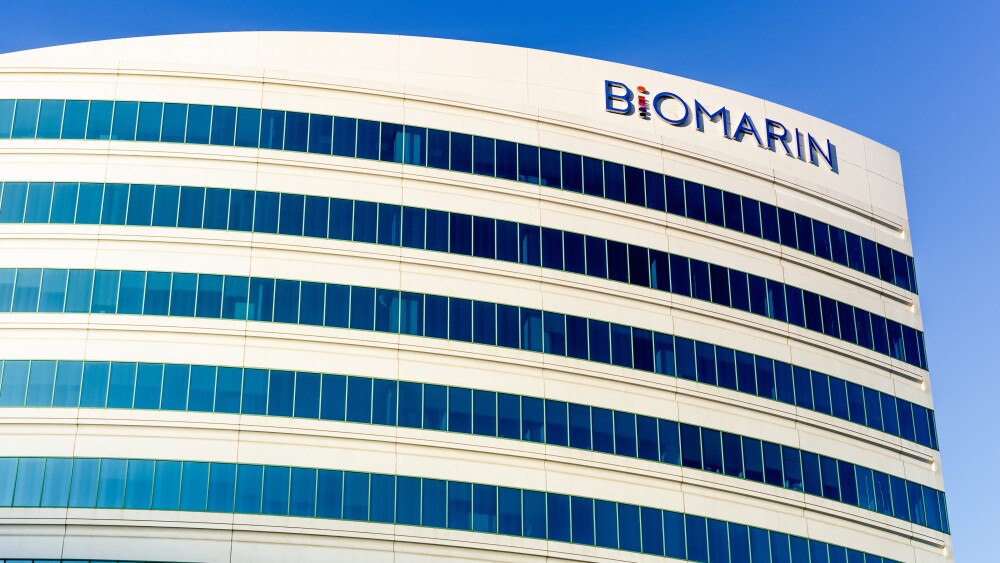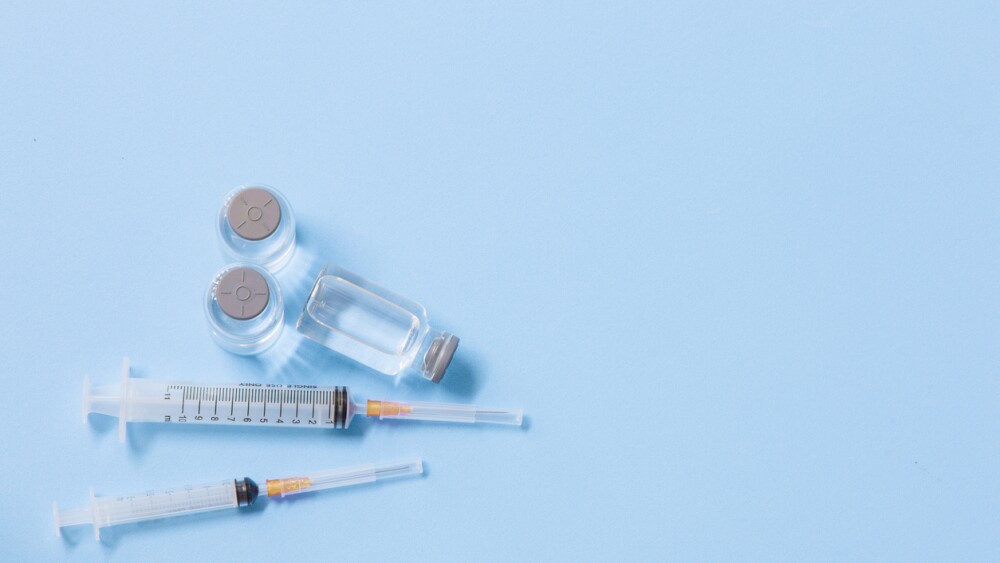BioMarin no longer expects to hit its $4 billion revenue target by 2027, citing various market factors such as impending competition for achondroplasia therapy Voxzogo and the divestment of the gene therapy Roctavian.
With aspirations of hitting $4 billion in revenue in two years fading amid competitive threats to the achondroplasia therapy Voxzogo, BioMarin will move forward as a leaner company, free from the stagnant sales of hemophilia A gene therapy Roctavian.
On the biotech’s third-quarter earnings call Monday, president and CEO Alexander Hardy revealed to investors that BioMarin is looking for opportunities to divest Roctavian “and remove it from our portfolio as we focus on the business units aligned with our strategic priorities.” BioMarin will ensure continuity of commercial supply in the U.S., Germany and Italy during this divestment process.
Meanwhile, the “impact of potential Voxzogo” competition heavily influenced BioMarin’s decision to withdraw its revenue target, chief financial officer Brian Mueller said on the call. Approved for use since birth, Voxzogo is a subcutaneous CNP analog for the treatment of achondroplasia. In the third quarter, the therapy grew 15% year-on-year to bring in $218 million, contributing nearly a third of BioMarin’s total revenues of $776 million.
The drug’s sales were “weaker than expected,” according to William Blair. This was partially offset by stronger growth for BioMarin’s enzyme therapies, including the Morquio syndrome drug Vimizim and the phenylketonuria product Palynziq, which brought in $516 million combined. BioMarin executives attributed the Voxzogo pressure to order timing and the geographic dispersion of older patients in the U.S., the analaysts said in a Tuesday morning note.
Voxzogo currently reigns as the only therapy for achondroplasia, the most common cause of dwarfism, but two competitors are close on its heels: Ascendis Pharma, which has a target action date of Nov. 30 for TransCon CNP, and BridgeBio, which is developing a small-molecule drug that addresses the root molecular cause of the condition.
BioMarin has now adjusted its 2027 top-line outlook to account for these competitors, admitting that the reign of Voxzogo may be nearing its end. On the call, BioMarin executives “informally” suggested that its 2027 revenues could fall between $3.65 billion and $4 billion, according to Stifel analysts.
Investors had been skeptical of the lofty revenue target set by BioMarin’s management, they added. But Monday’s announcement is still striking.
“This feels like a 180 from management’s prior steadfast confidence that Vox will be resilient/durable,” the firm said in a Tuesday morning note. “We were already somewhat more conservative than BMRN’s 2027 guide but with management pulling back in their conviction, we are ascribing more achondroplasia credit to competitors as well.”
With the change, William Blair expects BioMarin to face renewed questions about the Voxzogo franchise’s long-term viability.
“We think concerns regarding the competitive risk from Ascendis’s TransCon CNP and BridgeBio’s infigratinib are being more gravely heeded,” William Blair wrote.
Truist Securities was similarly surprised by BioMarin’s “softer tone” on Voxzogo, given the competitive threat from BridgeBio and Ascendis was already clear when the company held an investor day in September 2024.
“The sudden change in tone at this juncture is a bit surprising to us as these headwinds were well-telegraphed prior to Sep 2024 investor event, in our view,” Truist wrote on Monday evening.
In order to move on from this moment, Truist noted that business development has become more important for BioMarin going forward. The company acquired Inozyme for $270 million in March this year. Executives on the call noted the company has around $2 billion in cash and about $4-5 billion in capacity to deal.
“Management called out many rare disease focused biotechs who are undercapitalized and under-resourced that represent attractive opportunities for BioMarin,” Truist said.
Moving On From Roctavian
BioMarin also addressed the market failure of Roctavian on the call, announcing the divestment of the asset. Hardy said BioMarin is looking to make Roctavian accessible “to those interested in a gene therapy treatment,” in an effort to help the asset “reach its full potential.” He did not indicate how far along BioMarin is in searching for a potential buyer for Roctavian.
Designed as a one-time treatment for hemophilia A, Roctavian was approved by the FDA in June 2023 and works by delivering a shorter but functional copy of the gene that encodes for Factor VIII, a clotting protein that is deficient or lacking in patients with this disease. But uptake has been slow. The asset made only $26 million in 2024. These revenues were underwhelming enough that in August 2024 BioMarin narrowed commercialization efforts to just three markets: the U.S., Germany and Italy.
Still, while Roctavian’s sales have never really been impactful, BioMarin has long considered it a key pillar in hitting that $4 billion revenue target by 2027. During an investor event in September 2024, the company revealed a plan to restructure the company into three main units, one of which would be focused solely on Roctavian.
During the Q3 call on Monday, BioMarin rescinded these plans. “Since we shared the original $4 billion 2027 outlook last year, we’ve had a year to assess the various factors that have arisen since then,” Mueller told investors.
And while he would not release any “official position” on how BioMarin’s balance sheet might look in 2027, Mueller did note that BioMarin is looking at a couple of scenarios. In one such scenario, which excludes income from Roctavian, BioMarin does hit the $4 billion target by 2027, though Mueller was quick to caution that the company does not want to provide any formal and specific guidance, or even a narrow range, for its revenues in the coming years.






